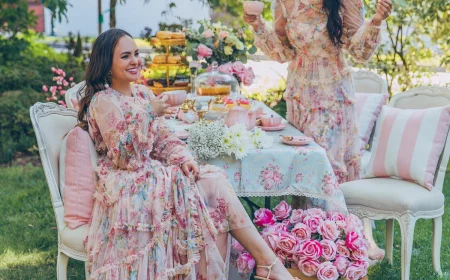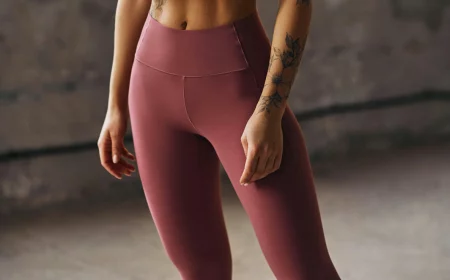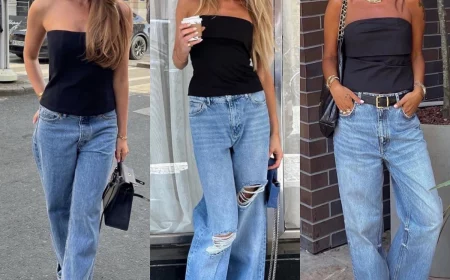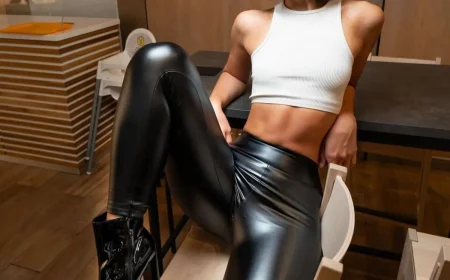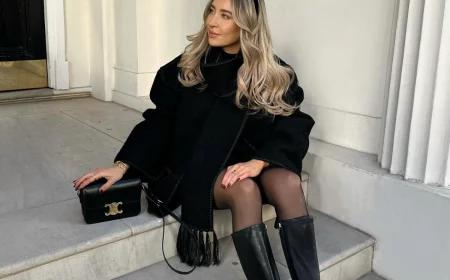The Prom Dress Insider’s Guide: Secrets from the Fitting Room
After countless seasons spent in fitting rooms, surrounded by pins, tulle, and teenage dreams, I’ve seen it all. I started in a cozy little boutique, helping girls find their first big-event gown. Later, I was the one managing the high-stakes world of alterations on delicate silks and hand-sewn beads. Prom is a huge deal, and let’s be honest, the dress feels like the main event. But finding the one is about so much more than what’s trending on social media.
In this article
- First Things First: Where Are You Shopping?
- Navigating the World of Online Dress Shopping
- Fabric 101: The Foundation of a Great Gown
- Construction Secrets: Turn That Dress Inside Out
- The Reality of Alterations: Budget, Timeline, and What to Expect
- Undergarments: The Unsung Heroes of a Perfect Fit
- Dressing for Your Shape: A Friendly Guide, Not a Rulebook
- After the Big Night: What Do You Do With the Dress?
- A Final Word from the Fitting Room
- Inspirational Gallery
It’s about the feel of the fabric, the quality of the stitching, and a fit that lets you dance all night without a single worry. So, my goal here is to pull back the curtain and share the secrets the pros know. We’re going to skip the fluff and get right into what makes a dress worth your money and your memories.
First Things First: Where Are You Shopping?
Before you even think about styles, let’s talk about where you’ll be looking. Each place has its pros and cons.
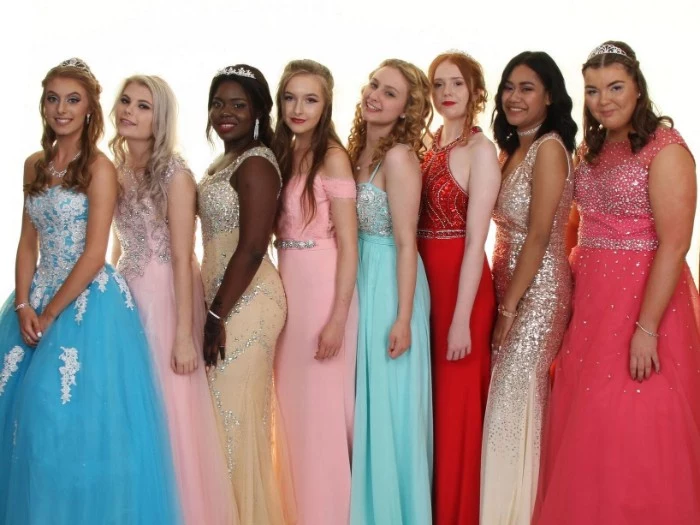
Local Boutiques: This is where you get the hands-on, personal experience. The staff usually knows their inventory inside and out and can offer amazing styling advice. The downside? Prices can be higher, and the selection might be more curated and smaller than a giant retailer.
Department Stores: You’ll find a huge variety of styles and price points here, from affordable brands to more upscale designer names. It’s a great place to try on a bunch of different silhouettes to figure out what you like. Just a heads up, the sales staff might be stretched thin, especially during peak season, so you might be more on your own.
Online Shopping: The internet offers endless options, and you can often find great deals. But oh, this path is filled with potential pitfalls. It’s a huge part of dress shopping today, so let’s talk about how to do it right.
Buying a formal dress online can feel like a gamble, but you can definitely stack the odds in your favor. I’ve had to fix so many online dress disasters that could have been avoided with a little caution.
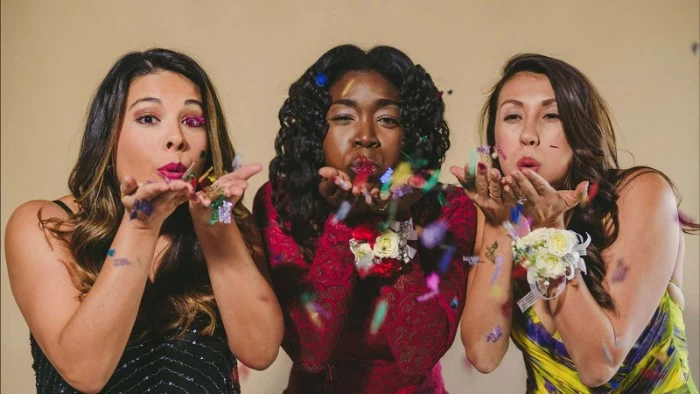
First, if a deal seems too good to be true (like a $500-looking gown for $49.99), it absolutely is. These are often scam sites using stolen photos. You’ll either get nothing at all or a poorly made garment that looks nothing like the picture. Stick to reputable online retailers or the direct websites of known brands.
Before you even click “add to cart,” you need to do two things: find the return policy and find your measurements.
Seriously, read the return policy. Some online stores, especially for formalwear, have a “final sale” or “exchange only” policy. You need to know if you can get your money back if the dress doesn’t fit or just isn’t what you expected.
Next, get out a soft measuring tape. Don’t just guess your size! Every brand’s chart is different. Here’s how to do it right:
- Bust: Measure around the fullest part of your chest, keeping the tape parallel to the floor.
- Waist: Measure around the narrowest part of your torso, usually an inch or so above your belly button. Don’t suck in! Just stand naturally.
- Hips: Measure around the absolute fullest part of your hips and butt.
Compare your numbers to the site’s size chart. If you’re between sizes, it’s almost always better to size up. It’s much, much easier for a seamstress to take a dress in than to let it out (which is often impossible).

Fabric 101: The Foundation of a Great Gown
Before you fall for a silhouette, get a feel for the fabric. The material dictates how a dress hangs, moves, and, most importantly, feels after a few hours of dancing. Here’s a quick rundown of what you’ll likely find.
Satin is probably the most common prom fabric. It’s a weave with a classic glossy finish. Most affordable prom dresses use polyester satin, which is durable and shiny but doesn’t breathe well. It can get a little sticky after you hit the dance floor. Fancier silk satin (charmeuse) is buttery soft and gorgeous, but it’s pricey and can show water spots from literally anything. Then there’s duchess satin, a heavier, more structured option with a subtle sheen. It’s fantastic for big ball gowns because it holds its shape and resists wrinkles.
Chiffon is that lightweight, sheer, and floaty fabric you see in Grecian-style gowns. It’s almost always polyester and used in layers to create a dreamy, ethereal effect. The main downside? It snags on everything—jewelry, a rough chair back, you name it. A good chiffon dress will have a tiny, clean rolled hem. A poorly made one will have a messy, fraying edge.
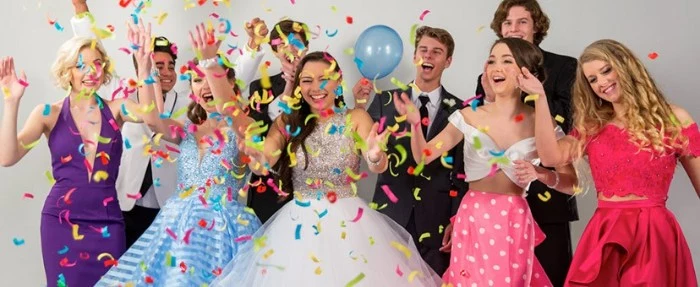
Organza is like chiffon’s crisp, structured cousin. It’s also sheer but much stiffer, used to add volume and drama (think ruffles and overlays) without a lot of weight. Heads up: it wrinkles like crazy, and you can’t iron it—it will melt. Steaming is the only way to go.
Then you have Tulle, the netting fabric from ballerina skirts. It’s all about creating volume for big, princess-style skirts. It can be soft or stiff. A quick word of warning about glitter tulle: that glitter will end up on you, your date, your parents’ car, and in the carpet for the next decade. Some venues have even banned glitter-heavy dresses because the mess is so epic.
For a sleeker look, there’s Crepe. It has a crinkled, textured feel and drapes beautifully, making it perfect for form-fitting mermaid or sheath gowns. Good crepe has some weight to it, helping it skim your curves. Cheap, thin crepe can be brutally unforgiving and highlight every undergarment line.
Finally, there’s Jersey. It’s a knit fabric, meaning it’s stretchy and super comfortable. It’s great for elegant, simple dresses, and the stretch makes sizing a bit more forgiving. But, if the dress is too heavy or poorly made, it can stretch out and lose its shape over the course of the night. A quality lining is non-negotiable with jersey.
Construction Secrets: Turn That Dress Inside Out
The inside of a dress tells the real story of its quality. When you’re in the dressing room, don’t be shy—do a quick inspection. This is what separates a $150 dress from a $500 one.
Here’s your mental checklist:
- The Seams: Gently pull on the side seams. Do they feel strong? Are the stitches small and even? On the inside, the raw fabric edges should be finished, usually with a serger’s zigzag stitch. Unfinished, fraying edges are a major red flag for a rushed, low-quality job.
- The Lining: A good dress will have a full lining. It helps the dress hang smoothly, feels better against your skin, and prevents it from being see-through under the flash of a camera. Cheap dresses often have no lining or just a partial one, which can be itchy and revealing.
- The Structure: If the dress has a fitted or strapless top, it likely has boning for support. Feel it through the fabric. It should be flexible plastic, not sharp or pokey. I once had a girl come in for a last-minute emergency fix because a cheap piece of boning had poked through the fabric and was literally stabbing her in the side. Not fun.
- The Zipper: A flimsy zipper is the number one cause of wardrobe malfunctions. I’ve seen them split right on the dance floor more times than I can count. A quality zipper will feel smooth and sturdy. An invisible zipper should lie flat without puckering the fabric around it.
And before you buy, do the movement test! Walk around, sit down, lift your arms, and bend over like you’re picking something up. Can you breathe? Can you move without feeling like you’re going to rip a seam? If not, it’s not the one.
The Reality of Alterations: Budget, Timeline, and What to Expect
Almost no dress fits perfectly off the rack. You absolutely have to factor alterations into both your timeline and your budget. The best seamstresses get booked up weeks in advance for prom season, so don’t wait!
Your Timeline: Plan to buy your dress at least 8-10 weeks before prom. You should be scheduling your first fitting 6-8 weeks out. This gives your seamstress plenty of time.
Your Fitting: This is critical. You MUST bring the exact shoes and undergarments you plan to wear. A half-inch difference in heel height changes the hem. A different bra can completely alter the fit of the bodice. No exceptions!
Typical Costs: Alteration costs can vary wildly. A simple hem on a single-layer, unlined dress might run you $30-$60. But hemming a multi-layered tulle gown or a dress with a beaded edge is a massive job. We have to work on each layer separately and sometimes even move beads by hand. That can easily cost $150-$250. Taking in the side seams could be anywhere from $40 to $100+, depending on the dress’s complexity.
Oh yeah, and if your dress has a long train, ask your seamstress about adding a bustle. A bustle is just a discreet system of hooks, loops, or ribbons that allows you to lift and secure the train off the floor after photos are done. It’s a total lifesaver for dancing.
Undergarments: The Unsung Heroes of a Perfect Fit
Let’s talk about what goes on underneath the dress because it makes all the difference. You can’t just throw on your everyday t-shirt bra and hope for the best.
For strapless dresses, a well-fitting strapless or corset-style bra is essential for support. For backless or low-back styles, you might need adhesive cups or a specialty low-back converter strap. There are amazing solutions out there, so it’s worth a trip to a good lingerie department.
And don’t be afraid of shapewear! It’s not about changing your size; it’s about creating a smooth canvas. A simple pair of high-waisted shaping shorts can prevent chafing and smooth out lines under clingy fabrics like crepe or jersey, making you feel way more confident.
Dressing for Your Shape: A Friendly Guide, Not a Rulebook
Okay, you’ve probably seen a million guides on dressing for your “body type.” I think of these as suggestions, not strict rules. The goal is to find a silhouette that makes you feel amazing. The best dress is the one that makes you stand up a little taller when you see yourself in the mirror.
- A-line skirts are famously flattering on just about everyone. They cinch at the natural waist and flare out gently, creating a beautiful balanced shape without being as dramatic as a full ball gown.
- Ball gowns with a fitted bodice and a big, full skirt are perfect for creating that classic hourglass look and making a major statement.
- Fit-and-flare or mermaid styles are designed to hug your curves through the bust, waist, and hips before flaring out. They are stunning but can be restrictive, so be sure you do that mobility test!
- Sheath or column dresses follow a straighter line down the body. They are incredibly chic and elegant, especially when made from a fabric with a beautiful drape, like crepe.
- Empire waist dresses have a high waistline that sits just under the bust. This creates a long, lean line that flows gracefully over the midsection, which is great for comfort.
Try on styles you don’t think you’ll like. You would not believe how many times I’ve seen someone fall in love with a dress they never would have picked off the hanger.
After the Big Night: What Do You Do With the Dress?
So prom is over, and you have this gorgeous, likely expensive, dress hanging in your closet. What now?
First, get it cleaned as soon as possible, especially if you spilled something on it. Check the care tag inside the dress. Some can be professionally dry-cleaned, but delicate beadwork or certain fabrics might require a specialist. If you’re trying to spot-clean a small stain, always test the cleaning solution on a hidden inside seam first to make sure it doesn’t damage the fabric.
For storage, don’t just leave it in the plastic bag from the dry cleaner, which can trap moisture. Use a breathable garment bag and hang it in a cool, dark closet. Once it’s clean, you have options! You could sell it on a marketplace like Poshmark or Facebook Marketplace, or donate it to an organization that provides prom dresses to girls who can’t afford them. It’s a lovely way to let the dress have another magical night.
A Final Word from the Fitting Room
Choosing a prom dress should be fun. This advice isn’t meant to overwhelm you but to empower you. A dress is just fabric and thread. The real magic comes from the confidence you feel when you wear something that is well-made and fits you perfectly. So trust your gut, do your homework, and get ready to have an amazing time.
Inspirational Gallery
- A well-fitting strapless bra and seamless underwear are non-negotiable.
- Bring heels or shoes with a similar height to what you plan to wear.
- Pack a hair tie to get a clear view of different necklines.
- Don’t forget your phone for pictures, but also to show your inspiration board to the consultant.
The secret to a successful shopping trip? Being prepared. Having these items on hand makes it infinitely easier to visualize the final look.
The forgotten cost: alterations. That ‘almost perfect’ dress might need hemming, straps adjusted, or the bust taken in. Always factor in an extra $50 to $200+ for professional alterations, especially for dresses with complex details like beading or lace. This ensures your gown fits like it was made for you, which is priceless.
Does the fabric choice really matter that much?
Absolutely. It dictates how the dress moves, photographs, and feels against your skin for hours. A heavy satin, like those used by Jovani, offers structure and a luxurious sheen perfect for classic glamour. In contrast, layers of airy chiffon or tulle create a soft, ethereal look that flows beautifully on the dance floor. Feel the material—if it’s scratchy or stiff in the store, it won’t magically get comfortable after three hours of dancing.
More than 75% of formal dress returns from online purchases are due to sizing issues, not style dissatisfaction.
This is why ignoring the brand’s specific size chart is the biggest online shopping mistake. Don’t assume you’re your usual size. Grab a measuring tape and compare your bust, waist, and hip measurements to the chart provided for that exact dress. When in doubt, it’s often better to size up slightly, as it’s easier for a seamstress to take a dress in than to let it out.
Before you even step out of the dressing room, give your potential dress a real-world test.
- Can you lift your arms comfortably above your head?
- Try sitting down. Does it pinch, ride up, or feel too restrictive?
- Do a little twist and a gentle squat. This is your ‘dance test’ to ensure you have room to move.
Matte Satin: Sleek, modern, and incredibly chic. This fabric shines with sophisticated, clean lines and is forgiving in photos as it doesn’t create harsh reflections. Perfect for minimalist or old Hollywood aesthetics.
High-Shine Sequins: The ultimate statement-maker. Designed to catch every light, a full-sequin gown from a brand like Sherri Hill is for the girl who wants to be the center of attention. Just be sure the sequins are sewn on a comfortable liner!
Choose based on the vibe you want: understated elegance or all-out sparkle.
The ‘Under-Dress’ Emergency Kit
A small clutch can be a lifesaver. Pack it with double-sided fashion tape for any gaping necklines, a travel-size stain remover pen (Tide to Go is a classic) for spills, a few safety pins for strap emergencies, and blister bandages for your feet. Being prepared lets you handle any minor wardrobe malfunction with zero stress.
Don’t be afraid to think beyond the dress on the rack. Simple customizations can make a popular style uniquely yours. Consider adding a sparkling belt to define your waist, swapping plain buttons for pearl or crystal ones, or asking a seamstress to add delicate, detachable off-the-shoulder straps to a strapless gown. These small tweaks create a bespoke feel without the couture price tag.
The color you choose can completely change the mood of your look. While classic black is timeless and navy is sophisticated, don’t overlook the power of color. Jewel tones like emerald green, sapphire blue, and rich burgundy photograph beautifully in evening light. For a softer, romantic feel, consider dusty rose, periwinkle, or sage. Look at your skin’s undertones—are you cool, warm, or neutral? Choosing a complementary color will make you glow.

